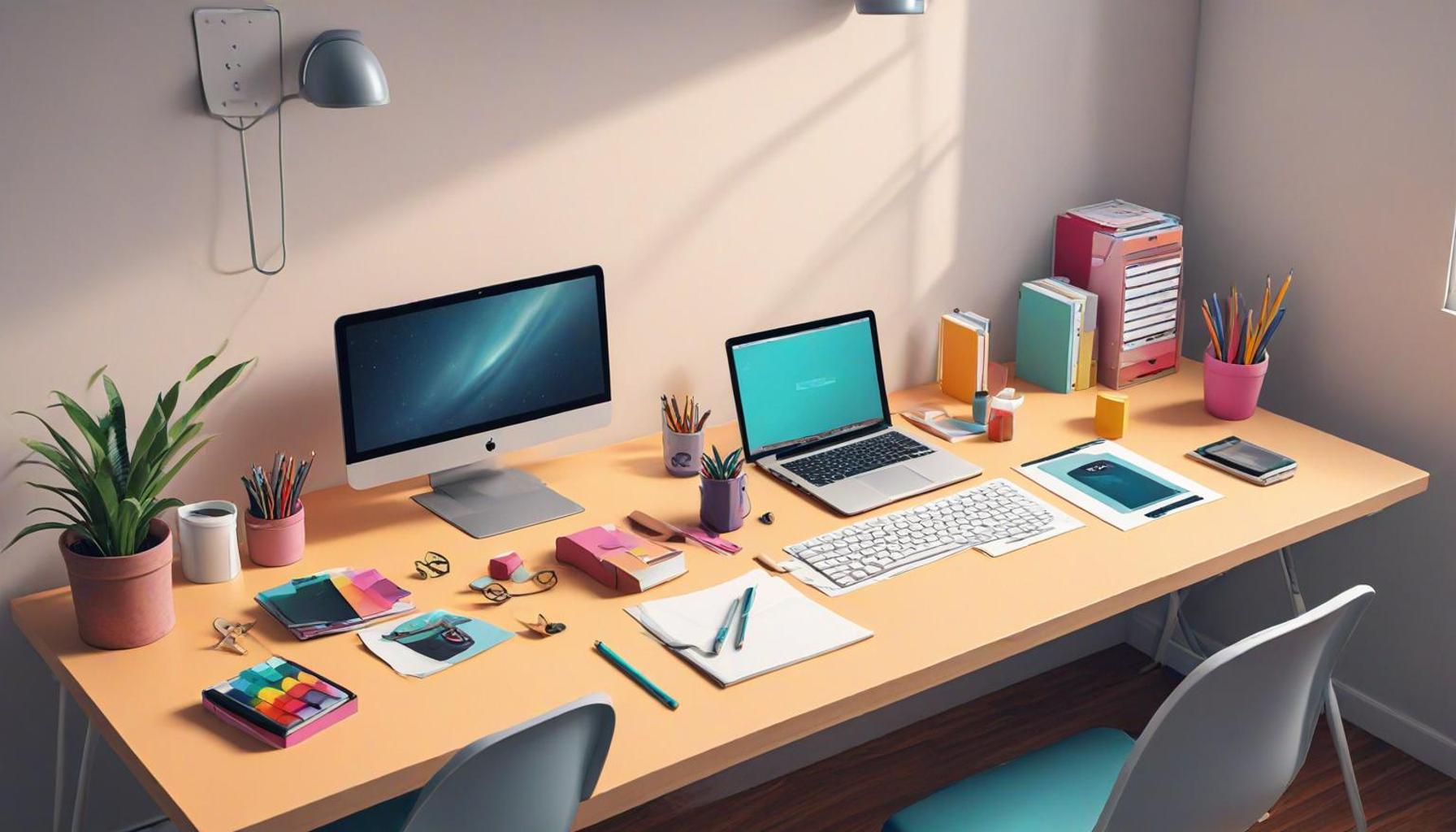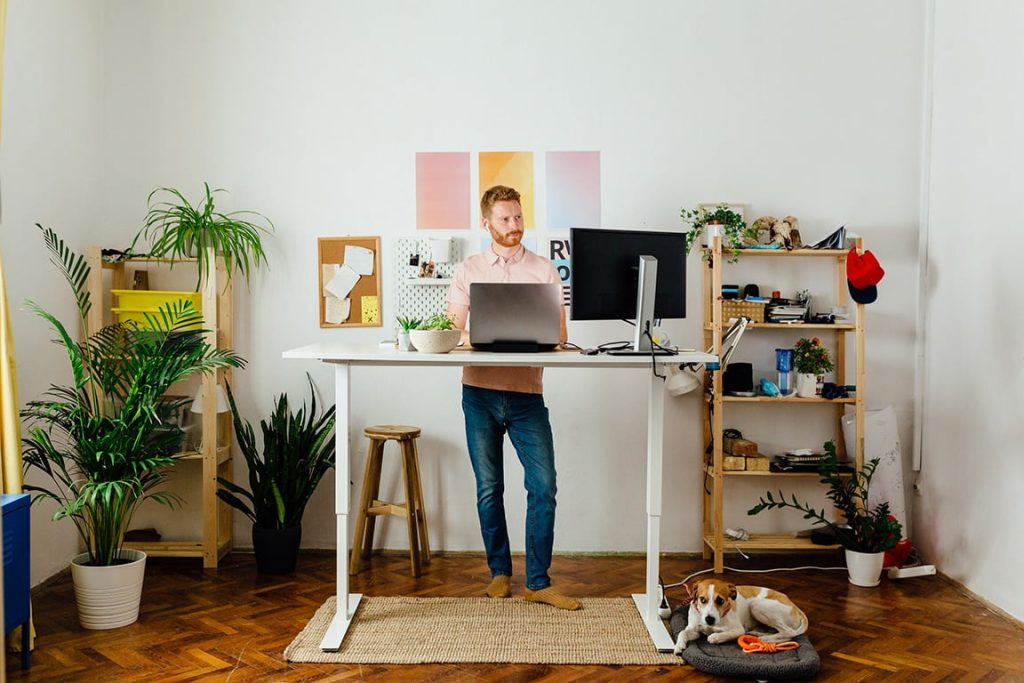Efficient Organization: How Minimalism Can Transform Your Workspace

Transform Your Workspace
In today’s fast-paced world, the quest for productivity can often seem overwhelming, especially when the environment around us is chaotic. The practice of minimalism emerges as a refreshing antidote, focusing on the principle that simplicity leads to efficiency. When you eliminate clutter, you cultivate a workspace that is not only visually appealing but also functionally superior, ultimately enhancing your work experience.
There are numerous advantages to adopting a minimalist workspace, some of which extend beyond mere aesthetics. Consider the following benefits:
- Enhanced Focus: In an uncluttered space, distractions are significantly reduced. Studies indicate that people perform better in environments where they can keep their attention on the tasks at hand. Imagine sitting at a desk devoid of unnecessary items; your mind can engage deeply with your work.
- Improved Clarity: A simplified environment promotes clear thinking. This can lead to better decision-making. Take cues from tech giants like Apple, whose minimalist design philosophy has revolutionized product aesthetics—less visual noise can translate to mental clarity.
- Increased Productivity: A streamlined workspace fosters more efficient task management. With fewer items competing for your attention, you can complete projects faster. A report from the American Psychological Association noted that clutter can contribute to feelings of stress, which in turn hampers performance. Decluttering can be a vital step towards higher productivity.
Minimalism also encourages intentional choices about your workspace. It invites you to evaluate the items that truly hold value, allowing you to retain only those that enhance your productivity. Picture removing items that don’t serve a purpose and arranging your essential tools in a way that optimizes your workflow. This deliberate organization can profoundly enhance not only the aesthetics of your space but also its overall efficiency.
So, how do you embark on this minimalist journey? Here are some practical steps to consider:
- Decluttering Techniques: Start small by setting a timer for 15 minutes each day to sort through your desk. Identify what to keep, what to donate, and what to discard. The “one in, one out” rule is also helpful; for each new item you bring into your workspace, consider removing an old one.
- Organizational Tools: Invest in multifunctional furniture, like desks with built-in storage or organizers that keep essential items at hand. Digital tools can also help; consider apps that streamline project management and keep your tasks visible without physical clutter.
- Design Ideas: Searching for inspiration? Explore minimalist design websites or follow creators on social media platforms who specialize in workspace aesthetics. Use neutral colors, natural light, and plants to create a calming yet functional atmosphere that enhances creativity while remaining inviting.
As you immerse yourself in minimalist principles, you may discover the transformative effects it can have on your productivity and overall creative output. Embracing minimalism could be the key to unlocking a more focused and efficient approach to your work. The ripple effects of a tidy, intentional workspace often extend beyond work hours, influencing mood, creativity, and overall well-being.

DISCOVER MORE: Click here to dive deeper
Embracing Minimalism: Steps Toward an Efficient Workspace
Adopting a minimalist approach to your workspace isn’t just about aesthetics; it’s a strategic decision that can profoundly affect your productivity and mental clarity. The essence of minimalism lies in prioritizing functionality over decoration, challenging you to reflect on what truly benefits you in your daily tasks. As you take steps toward creating a minimalist workspace, consider the following foundational aspects:
- Assess Your Needs: Start by evaluating the primary functions of your workspace. What tools and materials do you genuinely require? Limiting your possessions to the essentials makes it easier to determine which items truly contribute to your productivity. Ask yourself whether each item serves a purpose or simply occupies space.
- Establish a Functional Layout: The arrangement of your workspace can significantly influence your workflow. Position frequently used items within arm’s reach, while relocating less necessary tools to hidden storage. A well-thought-out layout minimizes unnecessary movements and distractions, fostering a conducive environment for focus.
- Technology Management: In today’s digital age, managing your digital clutter is equally important as your physical space. Organize files into clearly labeled folders, delete outdated documents, and consider using cloud storage solutions to reduce reliance on physical paperwork. Streamlining digital records creates a cohesive and organized workspace.
- Create Zones: Consider implementing designated areas within your workspace. For instance, having a clean desk area solely for focused work, a separate zone for collaborative tasks, and a relaxation corner for breaks can enhance your efficiency. Zones create structure, allowing the mind to switch gears seamlessly when transitioning between tasks.
The benefits of this careful orchestration of your workspace extend far beyond practicality. By embracing minimalism, you cultivate a sense of calm that encourages creativity and sparks innovation. As you find peace in your environment, it’s likely that your mental clarity will improve, paving the way for new ideas to flourish.
As your journey into minimalism progresses, you might experience a gradual shift in your daily habits. The act of keeping your workspace organized can become a ritual—inviting you to regularly reassess your environment and maintain a clutter-free atmosphere. This ongoing commitment not only enhances your workspace but also positively impacts your mindset, motivating you to approach each workday with renewed focus.
Minimalism, therefore, is not merely a design choice; it is a philosophy that can transform your whole approach to work and productivity. As you delve deeper into this lifestyle, you may come to realize that an organized workspace is synonymous with a more functional and fulfilling professional life.
| Advantages | Description |
|---|---|
| Reduced Clutter | Minimalism helps eliminate unnecessary items from your workspace, creating a visually appealing and tranquil environment. |
| Enhanced Focus | Less visual distraction allows for greater concentration on tasks, boosting productivity and creativity. |
| Improved Organization | With fewer items, it’s easier to arrange essential tools efficiently, optimizing workflow processes. |
| Stress Reduction | A decluttered workspace positively impacts mental well-being, reducing anxiety and enhancing overall job satisfaction. |
Minimalism isn’t just about aesthetics; it’s a practical approach that can fundamentally change how we interact with our work environment. Incorporating minimalistic principles transforms your workspace into a haven of productivity, inspiring both clarity and creativity. By embracing these changes, individuals not only promote an energizing workspace but also foster a mindset geared towards efficiency and organization.
DISCOVER MORE: Click here for space optimization tips
Transformative Benefits of a Minimalist Workspace
As you dive deeper into minimalism, the transformation of your workspace will not just be visible but will resonate through multiple aspects of your professional life. The integration of minimalism into your environment can lead to tangible benefits, enhancing your overall efficiency and satisfaction.
- Enhanced Focus and Concentration: A decluttered workspace inherently encourages a mindset focused on prioritization and task completion. With fewer distractions, your ability to concentrate on crucial projects is vastly improved. Research has shown that cognitive load increases significantly with clutter, often hindering your brain’s ability to process information effectively. Embracing a minimalist workspace can help alleviate this load, allowing you to devote your full attention to the task at hand.
- Improved Time Management: A streamlined workspace plays a crucial role in effective time management. When all necessary tools and materials are organized and easily accessible, the time spent searching for items diminishes dramatically. According to a study by OfficeMax, the average employee wastes 76 days a year searching for misplaced files. By implementing minimalism, you can reclaim this time, injecting productivity into your daily routine.
- Boosted Creativity: Interestingly, a minimalist workspace can actually pave the way for enhanced creativity. When your environment is free from distracting elements, your mind can explore ideas without unnecessary interruption. Many artists and innovators, such as Steve Jobs, were known for their minimalist approach, finding that a simple, uncluttered environment fosters an open channel for creative flow.
- Positive Mental Health Effects: The psychological impact of a clutter-free workspace is profound. Clutter has been scientifically linked to elevated stress levels and feelings of anxiety. On the contrary, adopting minimalism creates a serene environment that promotes mental well-being. By organizing your workspace, you are not just optimizing productivity; you are nurturing a healthier, more balanced mindset that can lead to greater job satisfaction.
Additionally, while the physical space transforms, so does the mentality surrounding work processes. Minimalism nurtures a culture of intentionality, encouraging individuals to scrutinize their workloads meticulously. With each item or task that has been meticulously curated in your workspace, a sense of purpose can flourish. This can lead to a more profound engagement with daily duties and responsibilities.
Furthermore, minimalism can extend beyond the individual workspace; it can permeate organizational culture when adopted across teams. Companies that emphasize a minimalist approach often see improved collaboration and communication. Employees are more inclined to share ideas and feedback in an open, clear environment that fosters trust and transparency.
Incorporating these elements into your workspace isn’t solely about elimination; it’s also about making strategic choices regarding what tools and environments genuinely stimulate your productivity. As you progress on this journey, remember that creating balance is key—minimalism should never compromise functionality. Instead, it should encourage thoughtful organization that aligns with your professional ambitions and personal well-being.
By transforming your workspace through minimalism, you are paving the path for not just an efficient organization but a profound shift in how you engage with work itself. The minimalistic mindset cultivates not only efficiency but also a transformative approach to your professional life.
DISCOVER MORE: Click here to uncover how minimalism boosts productivity
Reimagining Your Workspace with Minimalism
In conclusion, embracing a minimalist approach within your workspace can yield significant transformations that extend far beyond mere organization. The shift towards a minimalist environment cultivates a profound impact on your focus, creativity, time management, and overall mental well-being. By recognizing and eliminating the unnecessary clutter, both physically and mentally, you invite clarity and intentionality into your work processes.
The benefits of a decluttered workspace resonate not only on an individual level but also at the organizational scale. Companies that foster a minimalist culture often experience enhanced collaboration and communication, promoting a cohesive environment where creativity can flourish and team members feel empowered to share ideas. In this rapidly evolving professional landscape, minimalism serves as a catalyst for productivity and innovation.
As you explore the potential of minimalism, remember that this journey is ultimately about selecting and maintaining what truly matters in your workspace. This strategic curation of tools and elements not only enhances efficiency but also aligns with your personal and professional goals. Consider implementing small, incremental changes that gradually lead to a well-organized sanctuary where productivity thrives.
Transforming your workspace through efficient organization and minimalism is not just a trend; it is a commitment to fostering a healthier, more balanced professional life. By taking the first step towards crafting a space that reflects intentionality and purpose, you pave the way for greater satisfaction, enhanced performance, and renewed passion in your work. Embrace minimalism, and unlock the potential of your workspace today.
Related posts:
Sustainability and Minimalism: How to Reduce Waste with Optimized Spaces
Minimalist Study Spaces: Tips for Creating Environments that Stimulate Focus and Creativity
Transforming Living Spaces: The Art of Creating Functional Environments with Minimalism
Organization of Cabinets: Strategies to Optimize Storage Spaces with a Minimalist Style
The Role of Technology in Space Optimization: Tools for a Minimalist Lifestyle
Digital Minimalism: How to Organize Your Virtual Space to Increase Productivity

Linda Carter is a writer and organization expert specializing in minimalism and personal organization. With extensive experience helping individuals create clutter-free, functional spaces and adopt mindful habits, Linda shares her knowledge on our platform. Her goal is to empower readers with practical advice and strategies to simplify their lives, stay organized, and achieve a sense of calm and balance in their daily routines.